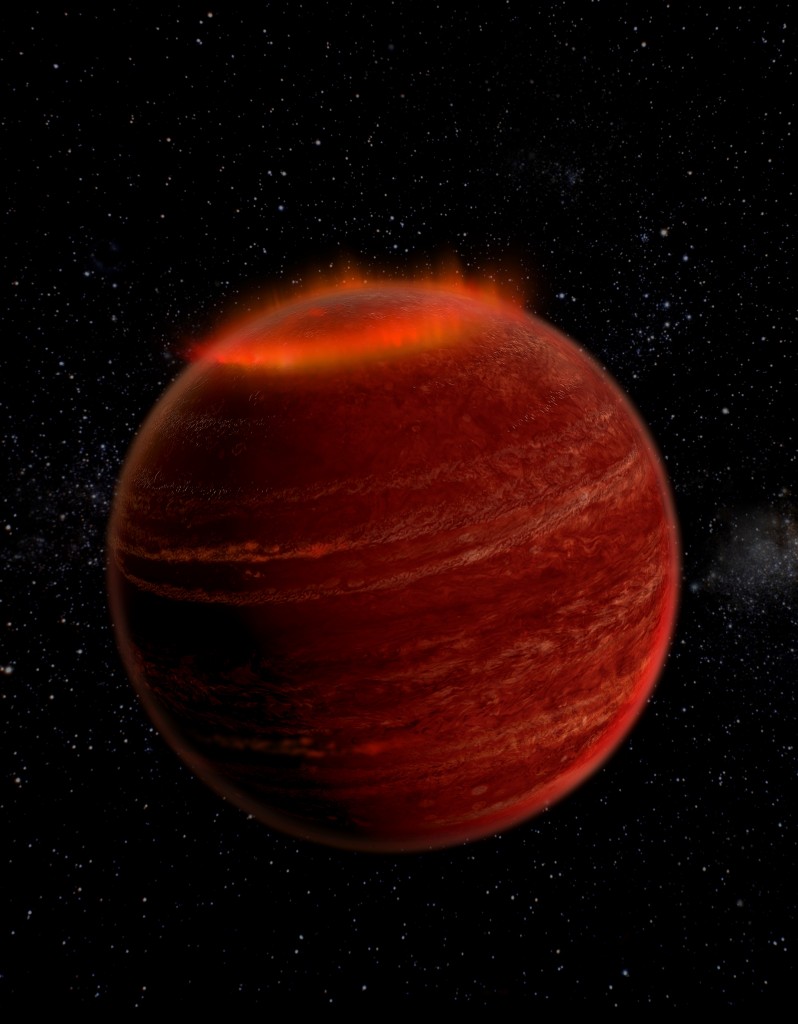
An artist’s impression of the aurorae on the brown dwarf LSR J1835. (Image credit: Chuck Carter and Gregg Hallinan/Caltech)
Astronomers have detected auroral activity, seen on Earth as the Northern and Southern Lights, on a stellar object, believed to be a brown dwarf, outside of our Solar System. The team simultaneously detected radio and optical auroral emissions from the extrasolar body LSR J1853, located 5.67 parsecs or 18.5 light years away from our Sun. Additionally the aurorae of LSR J1853 are powered in a different way, and are much more powerful, than aurorae seen in our solar system.
These findings suggest that aurorae may be more common of large-scale magnetospheres, the magnetic field enveloping a planet, and can produce brighter displays than those currently observed.
The magnetic activity of our sun is powered by processes in their lower atmosphere. In LSR J1853 the aurorae are powered by processes originating further out, in the magnetosphere.
The dissipated power of LSR J1853’s auroral activity is at least 10,000 time greater than the energy produced on Jupiter.
Original research paper published in Nature on July 28, 2015.
Names and affiliations of selected authors

